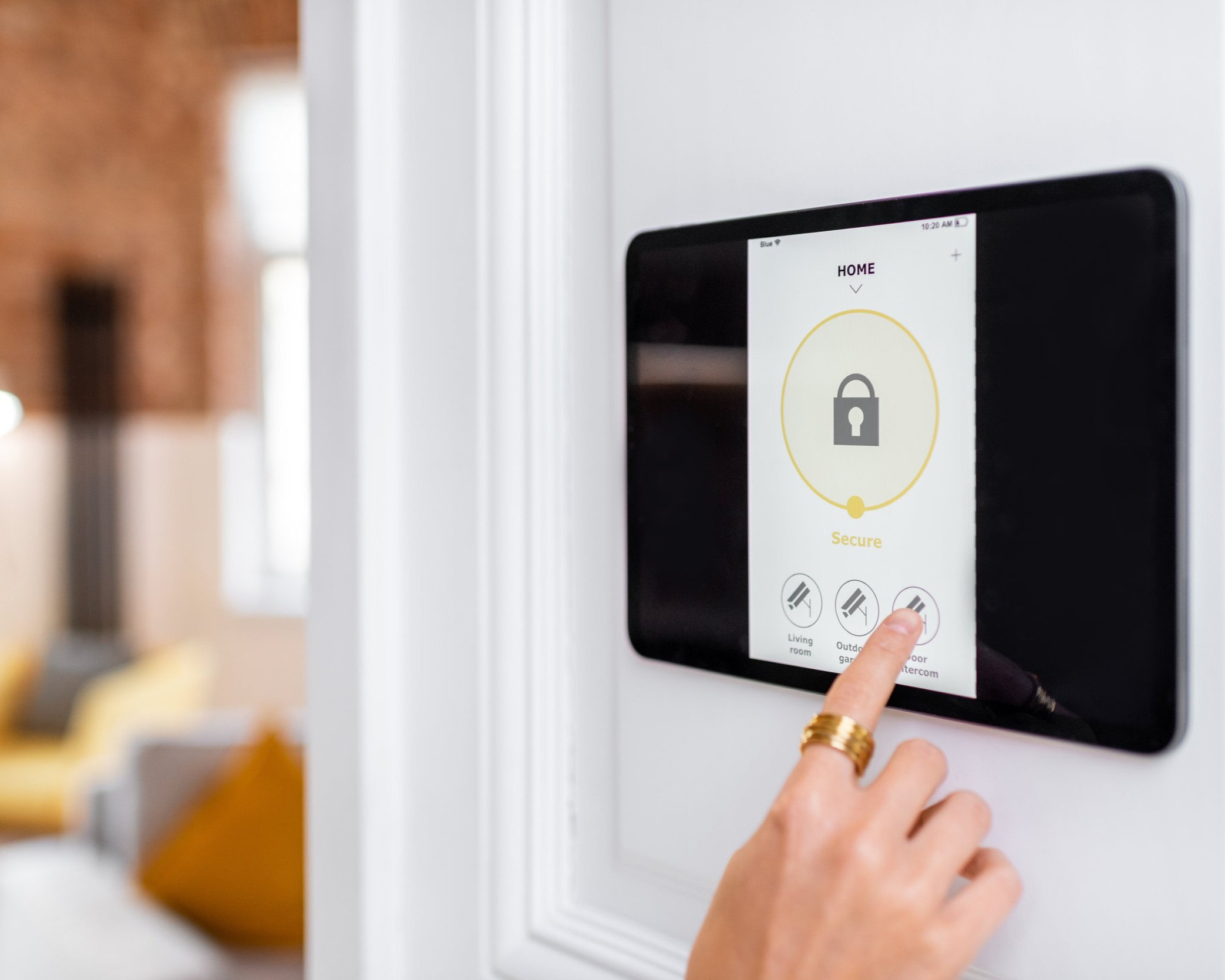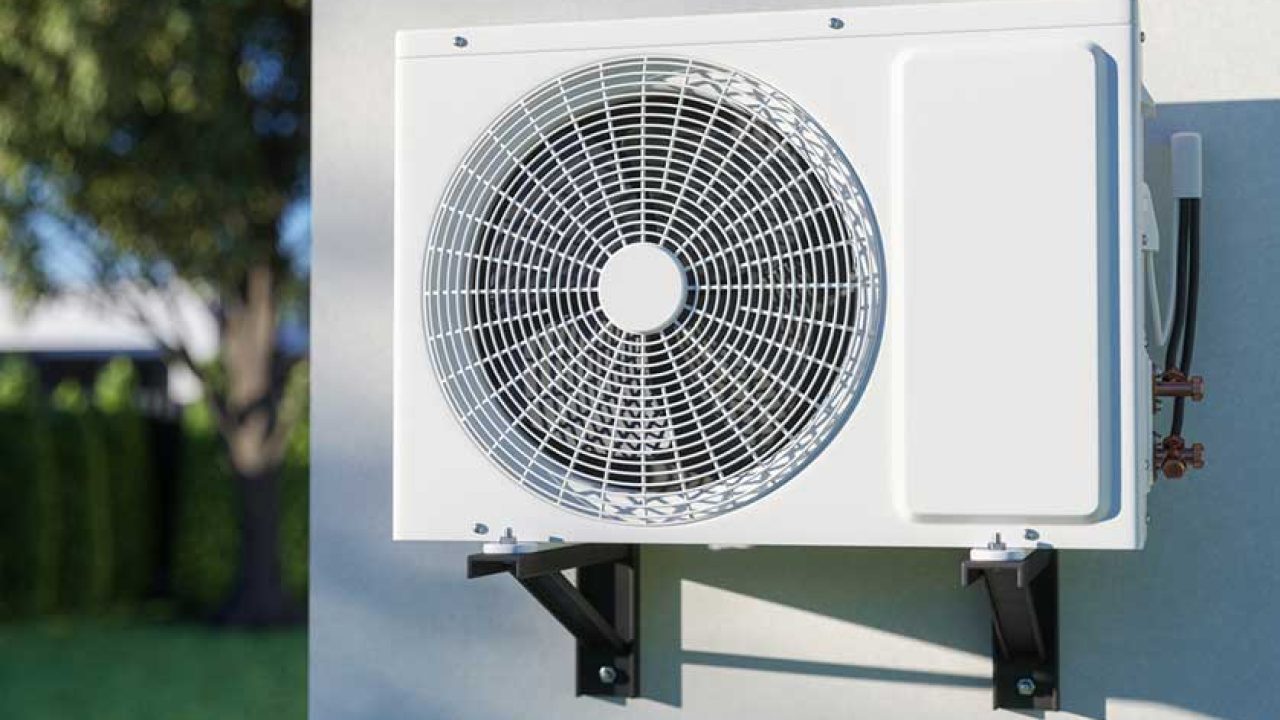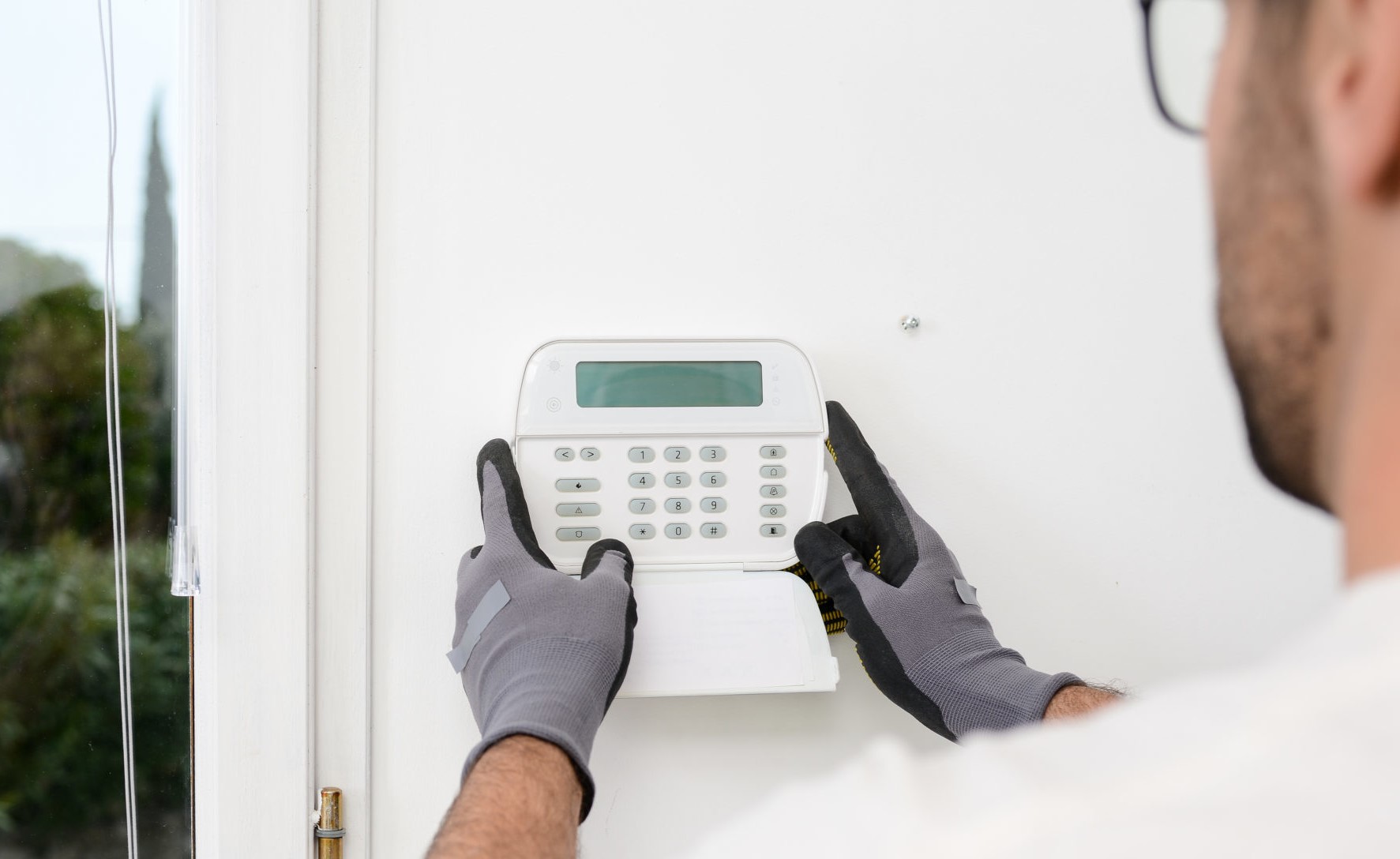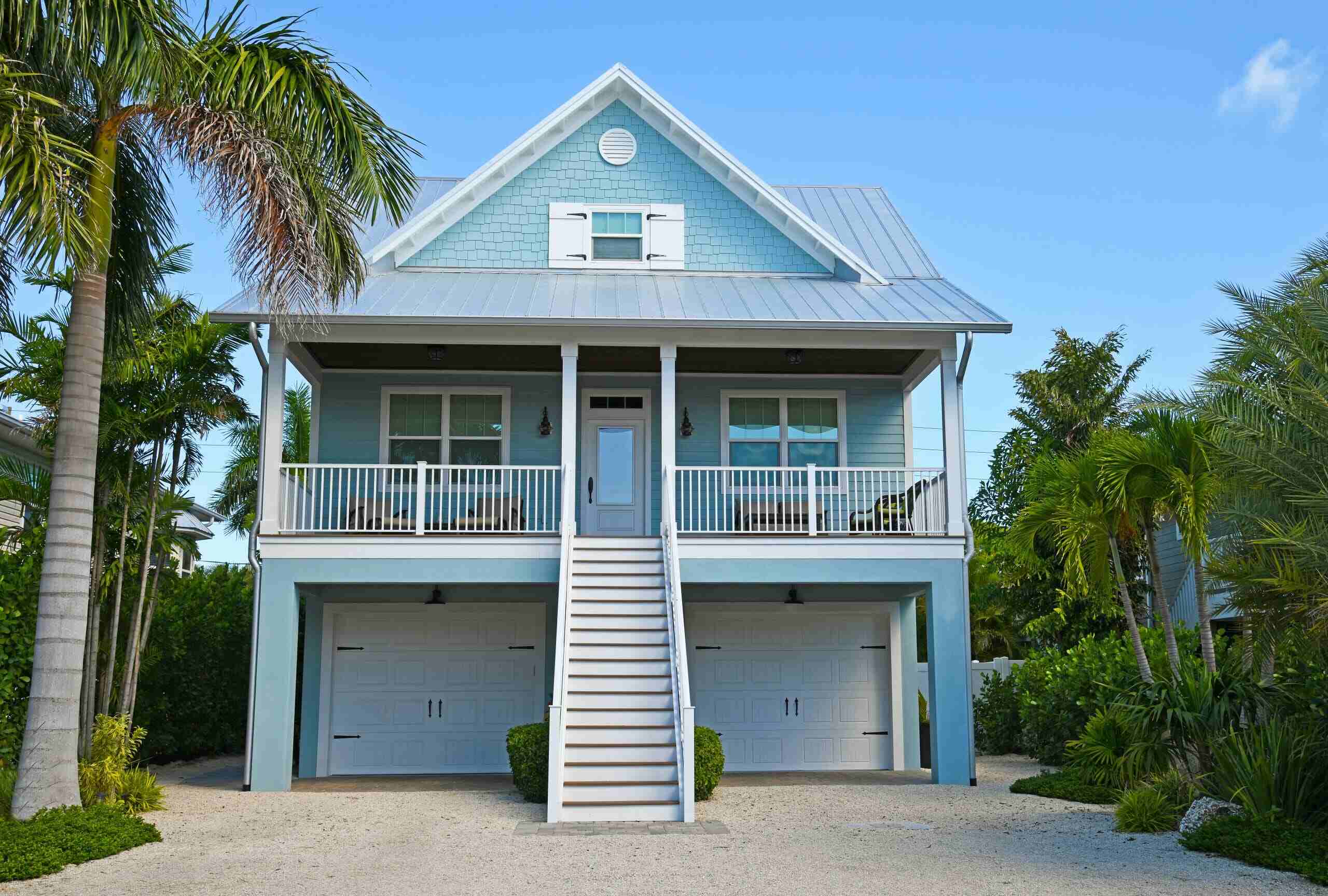Home>Home Security and Surveillance>Why Do Alarm Systems Have Multiple Partitions


Home Security and Surveillance
Why Do Alarm Systems Have Multiple Partitions
Modified: March 6, 2024
Learn why alarm systems have multiple partitions in this comprehensive guide. Discover how home security and surveillance are enhanced with this important feature.
(Many of the links in this article redirect to a specific reviewed product. Your purchase of these products through affiliate links helps to generate commission for Storables.com, at no extra cost. Learn more)
Introduction
Welcome to the world of alarm systems, where advanced technology meets the ultimate goal of keeping our homes and businesses safe and secure. One key feature that sets modern alarm systems apart is the ability to have multiple partitions. But what exactly does that mean and why is it important? In this article, we will delve into the concept of partitions in alarm systems and explore the reasons behind having multiple partitions.
Alarm systems have gone through a significant transformation over the years. From simple bell-based systems to highly sophisticated security solutions, they have become an integral part of ensuring the safety of our properties. In today’s world, where the importance of home security cannot be overstated, having an alarm system is a crucial investment.
So, what exactly is a partition in the context of alarm systems? In simple terms, a partition refers to a distinct area or zone that can be individually armed, disarmed, and monitored within the larger alarm system. It allows for customized security settings and separate control of each area connected to the system.
The concept of partitions is primarily utilized in alarm systems that cover large properties, such as commercial buildings or multi-level homes. By dividing the overall system into different partitions, it becomes possible to control and monitor various areas independently. This enables a more efficient and tailored approach to security management.
Now that we have a basic understanding of partitions, let’s explore the reasons why having multiple partitions in alarm systems is advantageous. From enhanced security and privacy to convenient control and compatibility with different user needs, multiple partitions offer a range of benefits that make them an essential feature of modern alarm systems. In the following sections, we will delve deeper into each of these reasons and examine the value they bring to the overall security setup.
Key Takeaways:
- Multiple partitions in alarm systems allow for customized security settings and independent control of different areas within a property, enhancing protection and privacy where it’s needed most.
- With multiple partitions, users can conveniently monitor and control each area independently, adapt security measures to varying needs, and ensure compatibility with different user requirements, providing tailored security for all.
Read more: Why Have An Alarm Systems
Definition of Alarm Systems
Before delving deeper into the concept of partitions in alarm systems, it is essential to have a clear understanding of what an alarm system is and how it functions.
An alarm system, also known as a security system, is a network of devices that work together to detect and alert users about potential security breaches or emergencies. It is designed to provide protection and peace of mind by monitoring and responding to various events such as intrusion, fire, or environmental hazards.
Typically, an alarm system consists of several components that work together seamlessly. These components include:
- Control Panel: The central hub of the alarm system that manages the communication between different devices and initiates appropriate actions based on the detected events.
- Sensors: Devices that detect specific events or changes in the environment. Examples include door/window sensors, motion sensors, and smoke detectors.
- Keypad: Allows users to arm or disarm the system, input access codes, and provides status feedback.
- Alarm Sirens: Sound-producing devices that emit loud alerts when an alarm is triggered to notify occupants and deter intruders.
- Monitoring Center: Optional service that provides professional monitoring of the alarm system. When an alarm is triggered, the monitoring center can contact the appropriate authorities or the homeowner.
When installed, an alarm system creates a protective barrier around a property, continuously monitoring for any signs of unauthorized access or potential emergencies. The sensors, strategically placed throughout the premises, detect and send signals to the control panel whenever an event is triggered. The control panel then processes the signals and determines the appropriate response, such as sounding the alarm or initiating a call to the monitoring center.
Now that we have a solid understanding of what alarm systems are and how they work, let’s explore the concept of partitions and their significance in enhancing the capabilities and flexibility of these systems.
The Concept of Partitions in Alarm Systems
Partitions are a critical feature in alarm systems that allow for the segmentation and individual control of different areas within a property. By dividing an alarm system into multiple partitions, users can customize security settings, monitor specific areas independently, and have separate control over each partition.
Think of partitions as virtual zones within an alarm system. Each partition can include a specific set of sensors, devices, and access points that pertain to a particular area or zone within a property. For example, in a commercial building, each floor or department can be assigned to a separate partition, while in a multi-level home, each floor or different areas, such as the main house and a separate guesthouse, can be assigned to their own partitions.
With the use of partitions, users can have granular control over the security settings for each area. This means they can arm or disarm individual partitions independently, allowing flexibility in securing different parts of the property based on specific needs or occupancy patterns.
Furthermore, partitions enable separate monitoring of each area, providing users with real-time information on the status of individual zones. Users can easily identify which partition is armed, disarmed, or currently experiencing an alarm event. This level of detailed monitoring contributes to a more efficient and effective security management process.
The control panel, which serves as the nerve center of the alarm system, plays a pivotal role in managing partitions. It allows users to assign sensors and devices to specific partitions, set custom security settings, and control each area independently. Additionally, the keypad, used for arming and disarming the system, often provides a visual display of the partition status, making it easy for users to determine the security state of each area at a glance.
Overall, the concept of partitions in alarm systems provides the flexibility and control needed to adapt to varying security requirements within a property. By segmenting the system into multiple partitions, users can tailor the security settings, monitor specific areas independently, and have separate control over each partition, ensuring the most effective security response.
Reasons for Having Multiple Partitions in Alarm Systems
Having multiple partitions in an alarm system offers a range of benefits that contribute to enhanced security, convenience, and compatibility with different user needs. Let’s dive deeper into the reasons why multiple partitions are a valuable feature in modern alarm systems:
- Enhanced Security and Privacy: With multiple partitions, users can establish individual security settings tailored to specific areas within their property. This means that even if one partition is armed, the other partitions can remain disarmed, allowing for unrestricted access to those areas. This level of customization ensures that security is focused where it is most needed, while still providing privacy and freedom of movement in other parts of the property.
- Customized Security Settings for Different Areas: Different areas within a property may have varying security needs. For example, a home may have a garage that requires a lower level of security compared to the main living area. With multiple partitions, users can set different security levels for each area, ensuring that security measures are appropriate and optimized for each specific zone.
- Convenient Monitoring and Control: Multiple partitions offer the convenience of monitoring and controlling each area independently. Users can easily check the status of each partition and receive notifications or alerts specific to that area. This level of detailed monitoring allows for quick identification and response to any security events, providing peace of mind and efficient security management.
- Compatibility with Different User Needs: In properties with multiple occupants, each person may have different security needs or preferences. With partitions, users can customize their own security settings without affecting others. For example, in a shared living space, each occupant can have their own access code and control over their designated partition, maintaining a sense of individual security and control within the larger property.
- Flexibility in Arming and Disarming: Multiple partitions offer flexibility in arming and disarming the alarm system. Users can choose to arm or disarm individual partitions based on their specific needs or occupancy patterns. For instance, users can easily arm the perimeter partitions while leaving the interior partitions disarmed during daytime when people are inside the property. This flexibility enables a more tailored and efficient security approach.
By incorporating multiple partitions into an alarm system, users can benefit from enhanced security, privacy, customization, and convenience. Whether it’s for a commercial building with multiple departments or a multi-level home, the flexibility and control provided by multiple partitions make them an essential feature in modern alarm systems.
Enhanced Security and Privacy
One of the primary reasons for having multiple partitions in alarm systems is to enhance security and privacy for property owners. By dividing the system into distinct partitions, users can establish individual security settings and tailor them to specific areas within their property, providing maximum protection where it is needed most.
When it comes to security, a one-size-fits-all approach may not be sufficient for all areas within a property. Different zones may have varying levels of vulnerability or require different security measures. For example, the main entrance of a building may require stricter access control and monitoring compared to a common area such as a lobby or cafeteria. By utilizing multiple partitions, users can assign different security protocols and customize the sensitivity of sensors based on the specific needs of each area.
This customization ensures that security resources and measures are focused where they are most effective, optimizing the protection of valuable assets and minimizing false alarms. By assigning different sensors, keypads, and access controls to each partition, users can create tailored security settings that align with the unique requirements of each area within their property.
In addition to enhanced security, multiple partitions also provide a sense of privacy for property owners. Not every area within a property needs to be armed and monitored at all times. For example, in a residential property, homeowners may want to arm the main living area and bedrooms while leaving the outdoor areas, such as a backyard or pool area, disarmed for unrestricted access. With multiple partitions, they can achieve this level of privacy and convenience without compromising overall security.
Moreover, multiple partitions allow for greater control over access and movement within a property. For example, in a commercial building with different departments, each partition can be assigned to specific employees or groups, allowing only authorized personnel to access their designated areas. This level of access control ensures that sensitive information or valuable assets are secure, while allowing employees to move freely within their designated zones.
The enhanced security and privacy offered by multiple partitions in alarm systems provide property owners with peace of mind. They can have confidence that their entire property is protected, while maintaining privacy within specific areas. By customizing security settings for each partition, users can create an optimal security solution that meets their unique needs and maximizes the effectiveness of their alarm system.
Read more: Why Do Fruits Have Seeds
Customized Security Settings for Different Areas
One of the key advantages of having multiple partitions in an alarm system is the ability to establish customized security settings for different areas within a property. This feature allows property owners to tailor their security measures to specific zones, ensuring that each area receives the appropriate level of protection based on its unique security requirements.
Every property is composed of various areas or zones that may have different levels of vulnerability or require distinct security measures. For example, a large commercial building may have departments with varying degrees of sensitivity and access requirements. The IT department may have stricter security protocols in place, while the marketing department may have more relaxed measures. With multiple partitions, each department can have its own designated zone, allowing for the implementation of custom security settings suited to its specific needs.
In a residential setting, multiple partitions can be useful for different floors or sections within a house. For instance, homeowners may want to apply heightened security measures to the ground floor, where the main entrance is located, while keeping the upper floors or basement less restricted for day-to-day activities. By customizing the security settings for each partition, users can achieve the right balance between security and convenience based on their preferences.
Customized security settings can be configured in various ways to address the specific needs of each area. This can include assigning different access codes, adjusting the sensitivity or response of sensors, and defining specific arming and disarming schedules for each partition. For example, in a commercial setting, individual employees or departments can be assigned unique codes to access their designated zones, allowing for effective access control and monitoring.
In addition to tailoring access and monitoring, customized security settings can also include specific alarm responses based on the partition. For instance, in a residential property, a triggered alarm in the main living area can automatically trigger video recording and send an immediate alert to the homeowner, while a triggered alarm in the backyard area may only sound an audible alert without recording or notifying the homeowner. This level of customization ensures that the security response aligns with the specific needs and priorities of each area.
By having customized security settings for different areas, users can optimize the protection of their property while maintaining flexibility and convenience. Multiple partitions empower property owners to adapt their security measures to align with the unique requirements of each zone, ensuring that assets, sensitive information, and individuals within specific areas receive the appropriate level of protection.
Tip: Multiple partitions in alarm systems allow different areas of a building to be armed or disarmed independently, providing flexibility and security for different zones or users.
Convenient Monitoring and Control
One of the key benefits of having multiple partitions in an alarm system is the convenience it offers in terms of monitoring and control. With multiple partitions, users can easily monitor the security status of each area independently and have separate control over each partition, providing a seamless and efficient security management experience.
When alarm systems are divided into partitions, users can access real-time information about the security status of each area. This means that they can easily determine which partitions are armed, disarmed, or currently experiencing an alarm event. The information is typically displayed on the control panel or the keypad, allowing users to quickly assess the status of each zone at a glance.
Having individual monitoring for each partition provides users with a comprehensive security overview without the need for manual inspection of every area. They can identify any potential security threats or issues in specific zones, allowing for prompt action and response. This level of detailed monitoring ensures that no area is left unattended or overlooked in terms of security.
Furthermore, convenient control is another advantage of multiple partitions. Users have the ability to individually arm or disarm each partition based on their specific needs and access requirements. For example, in a residential property, users may want to keep certain partitions armed while leaving others disarmed during daytime when occupants are inside. With this flexibility in control, users can customize the security setup to match their daily routines and preferences, without compromising overall protection.
Control over each partition can be easily managed through the control panel or the keypad. Users can assign sensors, devices, and access codes specifically to each partition, allowing them to make changes and customize security settings with ease. This convenient control minimizes the effort and time required to manage the alarm system, making it a user-friendly and intuitive experience for property owners.
In addition, some advanced alarm systems offer remote monitoring and control capabilities, enabling users to monitor and control their partitions from anywhere through a mobile app or a web-based interface. This means that users can access and manage their alarm system from their smartphone or computer, providing them with convenience and peace of mind, even when they are away from the property.
Overall, the convenient monitoring and control provided by multiple partitions in an alarm system empower users to efficiently manage their security setup. Whether it’s checking the status of each zone or customizing security settings, the ease of monitoring and control ensures that users can effectively oversee and adapt their security measures to maintain the utmost protection.
Compatibility with Different User Needs
Another significant advantage of having multiple partitions in an alarm system is the compatibility it offers with different user needs. Properties often have various users with distinct security requirements, and multiple partitions allow for customization and adaptation to these different needs.
In shared spaces, such as multi-tenant buildings or office complexes, each tenant may have different security needs and preferences. With multiple partitions, each tenant can have their own designated zone within the alarm system, allowing them to set up and manage their security independently. This compatibility with different user needs ensures that each tenant can customize their security measures based on their specific requirements without interfering with others.
Similarly, in a residential property with multiple occupants, each person may have different security needs and preferences. With partitions, individual family members can have control over their designated zones, including the ability to arm or disarm their specific area without affecting the security settings of other partitions. This compatibility ensures that each occupant can enjoy a personalized level of security within the larger property.
Moreover, multiple partitions accommodate different levels of access control within a property. For instance, in a commercial building with varying levels of security clearance, different partitions can be assigned to employees with different access privileges. This allows businesses to maintain the necessary security protocols and restrict access to sensitive areas while providing employees with the access they need for their respective zones.
Compatibility with different user needs also extends to the management and control aspects of the alarm system. With multiple partitions, users can assign unique access codes, user profiles, and user permissions specific to each partition. This ensures that users have the appropriate level of control and authority over their designated zones, allowing for seamless and efficient security management.
Additionally, multiple partitions can be valuable in properties that serve different purposes or have distinct sections. For example, a residential property with a separate guesthouse or an office building with an attached warehouse can assign separate partitions to these different areas. This compatibility allows for customized security measures tailored to each specific section, providing optimized protection based on the unique needs of each zone.
Overall, the compatibility with different user needs provided by multiple partitions in an alarm system ensures that each individual or group can tailor the security settings to their specific requirements. Whether it’s accommodating tenants in commercial buildings, different family members in residential properties, or different access levels in shared spaces, multiple partitions offer the flexibility and customization needed to meet diverse user needs within a property.
Flexibility in Arming and Disarming
Flexibility in arming and disarming is a key advantage of having multiple partitions in an alarm system. It provides users with the ability to tailor their security measures to align with their specific needs and occupancy patterns. This flexibility ensures that the alarm system adapts to the changing dynamics of a property, offering optimal protection while maintaining convenience and ease of use.
Each area within a property may have different security requirements or may need to be armed or disarmed at different times. For example, in a residential property, homeowners may want to have the main living area armed and monitored 24/7, while leaving the bedrooms or basement disarmed during daytime when occupants are inside. With multiple partitions, users can easily configure arming and disarming schedules for each partition, allowing for customized security based on specific areas and timeframes.
Flexible arming and disarming also enable users to respond to varying occupancy patterns. For instance, in a commercial building, different departments may operate on different schedules or have specific security rituals. With partitions, each department can have its own designated zone that aligns with its operational hours. This flexibility in arming and disarming ensures that security measures are in place when needed while providing unrestricted access during appropriate times, enhancing efficiency and convenience.
Moreover, multiple partitions offer the convenience of arming and disarming individual areas without affecting the overall security of the rest of the property. This is particularly important in properties with shared spaces or multi-tenant buildings, where occupants may want to have control over their specific zones. With partitions, each user can arm or disarm their designated area independently, ensuring that they have the desired level of security without impacting others.
In addition, the flexibility in arming and disarming provided by multiple partitions is valuable in situations where temporary access is granted to specific areas. For example, if maintenance workers need to access a specific part of a property for a limited period, users can easily disarm that partition temporarily to allow authorized entry while keeping the rest of the property armed. This level of control ensures that security is adjusted based on specific needs and minimizes disruption to daily routines.
By offering flexibility in arming and disarming, multiple partitions allow users to customize their security measures based on their unique needs and occupancy patterns. This ensures optimized protection, enhances convenience, and promotes seamless security management within a property.
Read more: Why Do Bars Have Mirrors
Limitations and Challenges of Multiple Partitions
While multiple partitions in alarm systems offer numerous benefits, it is important to be aware of the limitations and potential challenges that can arise when implementing this feature:
- Complex Setup: Setting up and configuring multiple partitions can be more complex compared to a single-zone alarm system. Proper planning and configuration are necessary to ensure that each partition is correctly assigned and that the security settings align with the specific needs of each zone.
- Increased Cost: Implementing multiple partitions may require additional hardware and devices, such as control panels and sensors, which can increase the overall cost of the alarm system. Additionally, more complex systems may require professional installation and configuration, adding to the initial expenses.
- Increased Maintenance: Multiple partitions can complicate the maintenance and troubleshooting process. If issues arise, it may be more challenging to identify and isolate them to specific partitions, requiring additional time and effort to address the problem effectively.
- User Error: With multiple partitions, there is a higher potential for user error, such as arming or disarming the wrong partition or forgetting to set the appropriate security settings. Users must be familiar with the system’s operation and have clear instructions to ensure that security measures are correctly configured and adhered to.
- Compatibility and Integration: Multiple partitions may present challenges when integrating with other security systems or devices. Compatibility issues between different brands or models of alarm systems can arise, making it important to ensure that the components within each partition are compatible and communicate effectively.
- Communication Limitations: In some cases, the communication between partitions may be limited or compromised. For example, signals from sensors in one partition may not be able to reach the control panel due to distance or interference. Proper positioning and range considerations are essential to ensure seamless communication between different components within each partition.
- Monitoring Complexity: Monitoring multiple partitions can be more complex compared to monitoring a single-zone system. Integration with a central monitoring station may require additional setup and configuration to ensure that alarms from different partitions are properly identified and handled by monitoring personnel.
While these limitations and challenges exist, with proper planning, configuration, and user training, many of these issues can be mitigated. It is essential to work with knowledgeable professionals who can guide the implementation of multiple partitions and address any challenges that may arise.
Overall, understanding and addressing the limitations and challenges associated with multiple partitions is crucial to ensure the effective and efficient operation of an alarm system in a multi-partition environment.
Conclusion
In the ever-evolving landscape of home security, the concept of multiple partitions in alarm systems has emerged as a valuable feature. By dividing an alarm system into different partitions, users can enjoy enhanced security, privacy, and convenience. Each partition can be individually armed, disarmed, and monitored, allowing for customized security settings and tailored control over specific areas within a property.
The advantages of multiple partitions are significant. Property owners can establish customized security settings for different zones based on their unique requirements. Whether it’s a commercial building with multiple departments, a multi-level home, or shared living spaces, partitions provide the ability to adapt security measures to match the needs of each area.
Having multiple partitions also offers convenient monitoring and control. Users can easily monitor the security status of each partition, ensuring a comprehensive overview of the property’s security. The ability to independently arm and disarm partitions allows for flexibility based on occupancy patterns, user preferences, and varying security needs.
Furthermore, multiple partitions in alarm systems ensure compatibility with different user requirements. This feature accommodates the needs of tenants in commercial buildings, different occupants within residential properties, or various access levels in shared spaces. By offering individualized security measures, partitions provide a personalized and tailored approach to security for each user.
However, it’s important to be aware of the limitations and challenges that come with multiple partitions, such as complex setup, increased cost, and maintenance considerations. User error and compatibility issues can also arise, requiring attention and expertise to overcome these challenges effectively.
In conclusion, the concept of multiple partitions in alarm systems brings numerous benefits that significantly enhance the security and functionality of a property. With the ability to establish customized security settings, convenient monitoring and control, and compatibility with different user requirements, multiple partitions are a crucial feature in modern alarm systems. When implemented properly and properly maintained, multiple partitions offer a tailored and efficient security solution for properties of all types and sizes.
Frequently Asked Questions about Why Do Alarm Systems Have Multiple Partitions
Was this page helpful?
At Storables.com, we guarantee accurate and reliable information. Our content, validated by Expert Board Contributors, is crafted following stringent Editorial Policies. We're committed to providing you with well-researched, expert-backed insights for all your informational needs.













